|
Rio San Martin - more wildlife
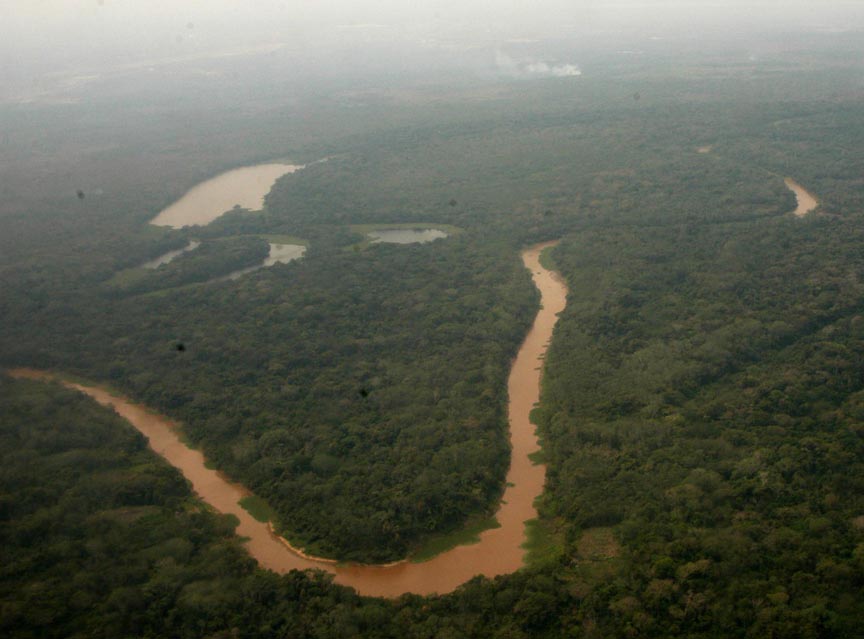
A tributary of Rio Mamore from the air.
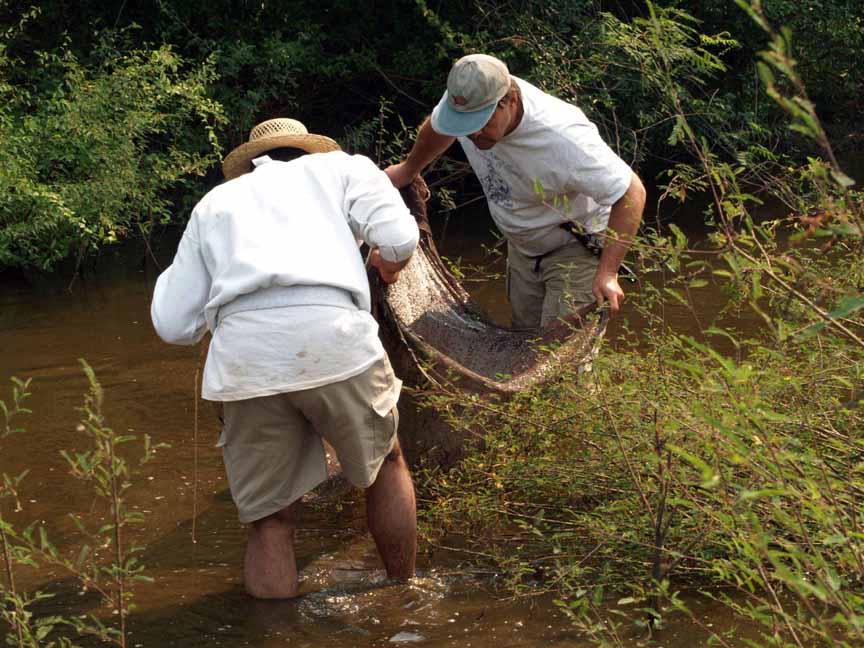
Notice a sweatshirt on my back. At least I had one...Jeff didnt. I'd heard it could get chilly in Bolivia but I wasnt really prepared for it. A couple of days into our stay, a cold blast of Antarctic air blew up our way, dropping morning temps to the low 50s F. There is really no natural barrier for cold air coming from the southern tip of the continent, so the wind blew, the birds and fish hid and we froze. Remember that the airline had lost my luggage, so what you see me in is what I wore for a week. The water was a nippy 66 degrees F. Still, we caught lots of fish - pappaterra, festivums, apistos, Crenicara, Geophagus, Acaronia etc. Bolivian fish are quite hardy when it comes to temperatures. I know someone who had a Cichlasoma boliviense that desperately needed a water change and the only water he had access to was refrigerated bottled water, which I assume was at about 40 degrees. He plopped the C. boliviense into the ice-cold bag of water. The fish survived and is living happily somewhere in Ohio.
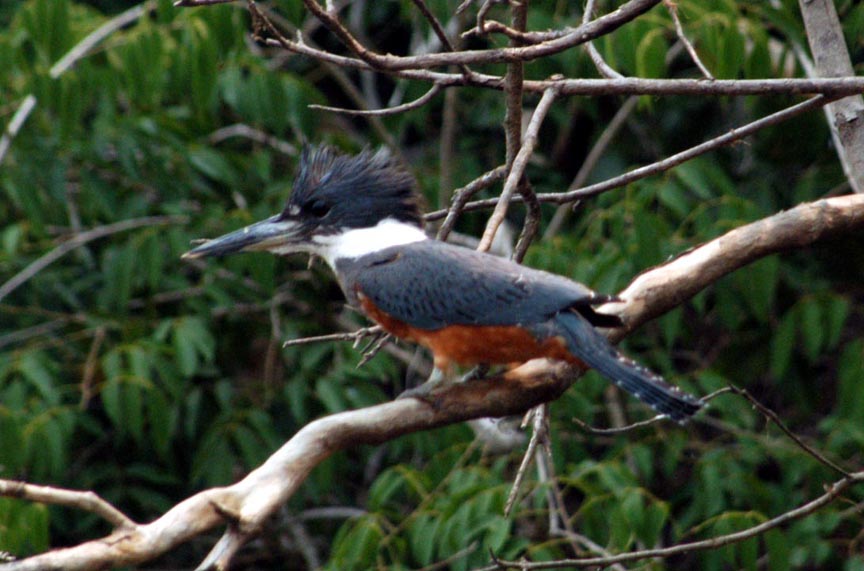
Another species of Kingfisher.

A few trees near the cabin at El Prado served as a roost to about a thousand (literally) Conures. I dont know the species of the bird, but they would all arrive at about 5:30 in the evening. The noise was deafening. If you walked slowly, you could gradually walk into the middle of the trees and hundreds of these Conures would swarm around you in the process of finding just the right branch to spend the night on. It felt like I was bathing in parrots! There must have been at least a thousand of them. Of course, none of them pooped on my head - roosting birds do not defecate in order to hide their presence to night time predators.

We saw this gorgeous Dove near Bella Vista.
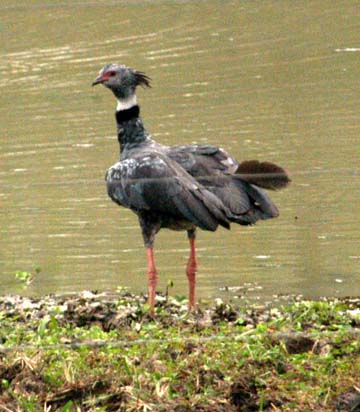
A Southern Screamer. It is an aptly named bird. It is the size of a turkey and a bit skittish. It took flight as soon as it spotted us and screamed for an hour before it landed. Its screams can be heard for miles around.

Skimmers fly just above the surface of the water with their unusually long lower beak skimming the surface. When their sensitive beak feels a fish, it snap shut.
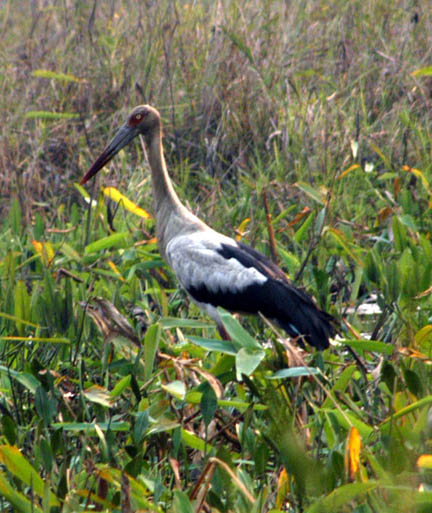
An ominous looking large stork on the savannah.
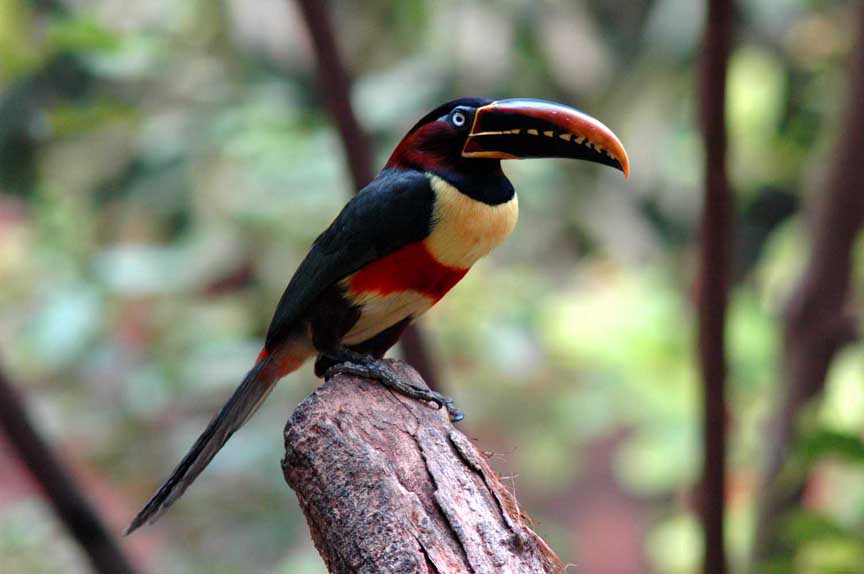
A Chestnut-eared Aracari in Magdalena.
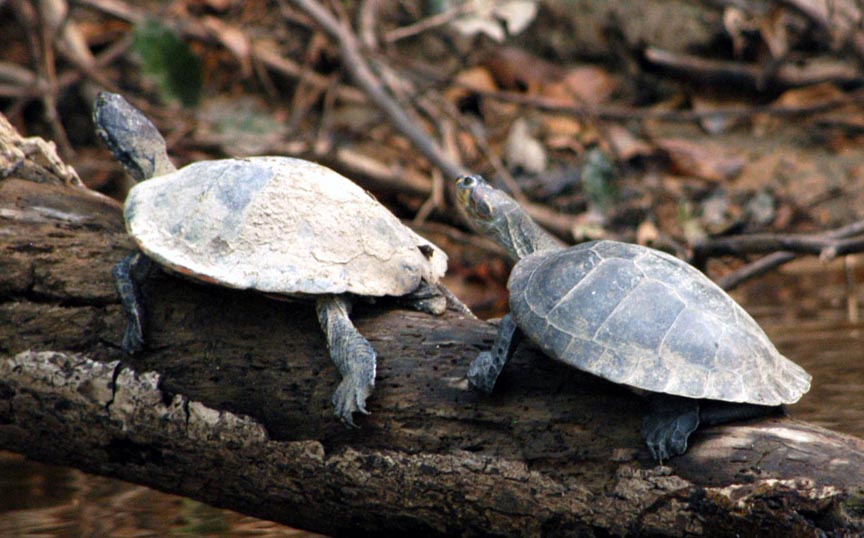
Two turtles resting on a log.
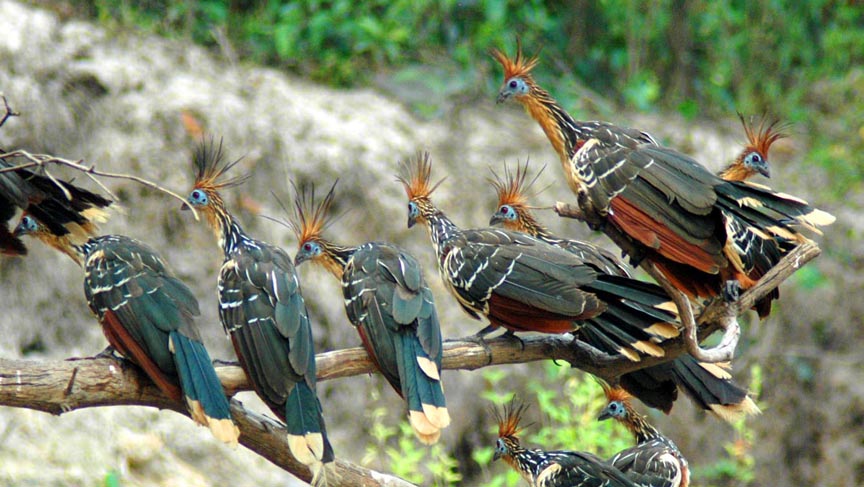
Hoatzins are one of the most ancient and enigmatic birds. They were supposed to be rather rare, but they were quite abundant where we were. Noisy when disturbed, they make wheezing, coughing sounds like a old smoker. They are the size of chickens and fly about as well as chickens. When they take flight, they dont land gracefully on a stem or a branch, but rather on a pile of leaves and with the help of a vestigeal hook or finger claw on the top of their wings, they climb up onto a branch. Leaves constitute a large part of the diet. A fermentation chamber in their gullet that houses colonies of bacteria aids to digest and process leaves. These bacteria make the birds foul-smelling, so most locals leave them alone.
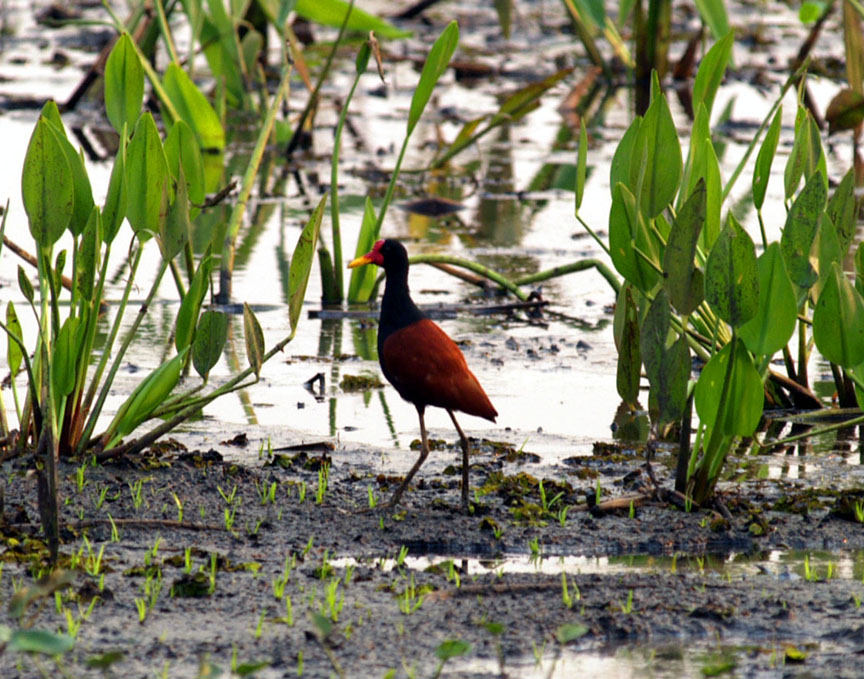
A Jacana

A colorful moth.

We spotted a family of Giant Otters frolicking, but they were behind a lot of fallen tree stumps - my camera was not set on spot/center weighted focusing, so this is the best shot I could get of it.

A Great Egret.
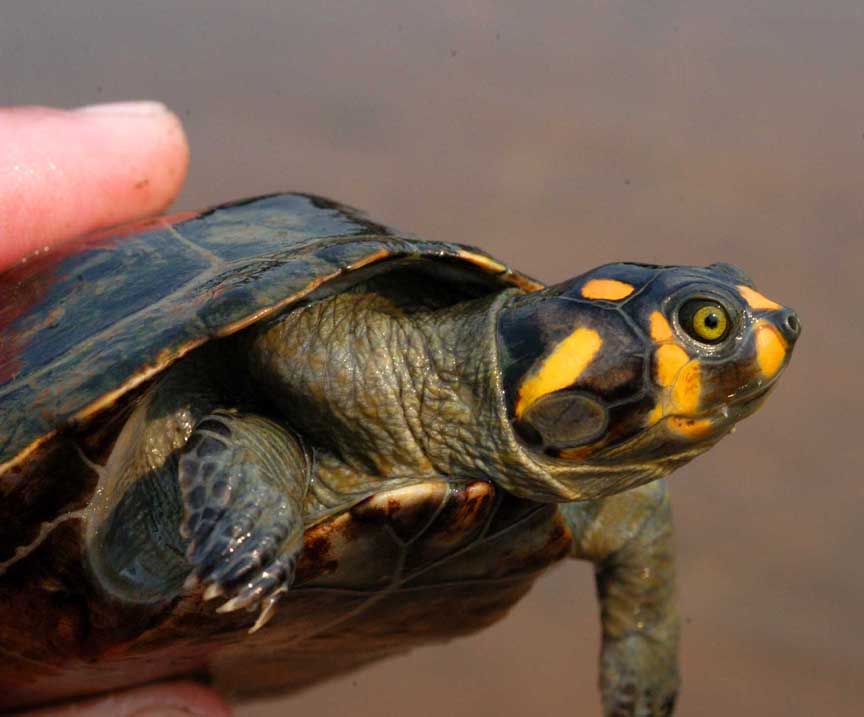
A yellow eared turtle.
All photos by J. Cardwell, S. Jack and V. Kutty
|

